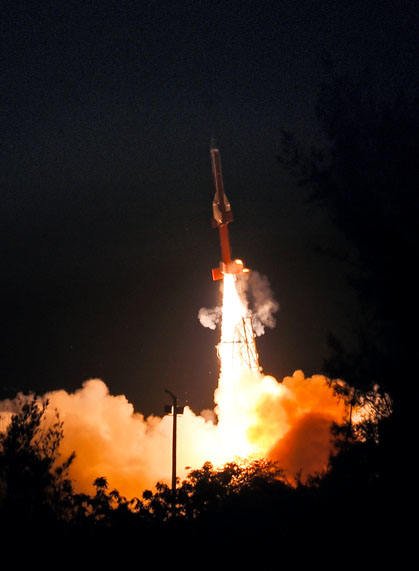The Indian Space Research Organisation (ISRO) has announced the successful completion of the first scramjet engine experimental mission on 28th August from Satish Dhawan Space Centre SHAR, Sriharikota. The test was the maiden short-duration experimental test of the engine with a hypersonic flight at Mach 6.
The solid rocket booster — an Advanced Technology Vehicle (ATV) sounding rocket — carrying two scramjet engines lifted off at 06:00 hrs (India Standard Time). The ATV carrying the scramjet engines weighed 3,277kg at lift-off. According to ISRO, burnout of the booster rocket stage, ignition of the 2nd stage solid rocket, functioning of scramjet engines for five seconds followed by burnout of the second stage, took place exactly as planned.
After a flight of about 300 seconds, the vehicle touched down in the Bay of Bengal, approximately 320km from Sriharikota. The vehicle was successfully tracked during its flight from the ground stations at Sriharikota.
Critical technologies such as ignition of air-breathing engines at supersonic speed, holding the flame at supersonic speed, air intake mechanism and fuel injection systems were successfully demonstrated.
Some of the technological challenges handled by ISRO during the development of the scramjet engine include the design and development of a hypersonic engine air intake, the supersonic combustor, development of materials withstanding very high temperatures, computational tools to simulate hypersonic flow, ensuring performance and operability of the engine across a wide range of flight speeds, proper thermal management and ground testing of the engines.

